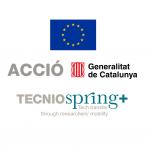DESCRIPTION
High-performance fiber reinforced polymer (FRP) composites are at increasing demand in key industry sectors (e.g., aerospace, automotive) due to modern lightweight design strategy, which triggers reduced structural weight while preserving the high mechanics performances; reduced fuel consumption and consequent reduced NOx emission; and increased design flexibility compared to traditional isotropic materials.
Digital additive manufacturing (AM, commonly referred to as 3D printing) has also emerged as a relatively new and booming technological concept. A method of extreme interest for further development and innovation due to its potential to bring complete modification of the production chain; with no need for complex tooling and reduced need for auxiliary manufacturing systems, which translates into less associated costs, more efficient resources usage, and positive environment impact; technology adapted to low production rates, at yet competitive costs; offering the possibility to produce complex assemblies with fewer parts and fewer joining elements; in a more flexible manner, being able to rapidly apply changes to the design, meeting thus the needs of a more and more dynamic market; resulting in almost zero manufacturing waste; advanced human-machine interaction in a compact and predominantly automated and computer controlled environment for integrated design and manufacturing; which make this new manufacturing technology have a direct track to the market and to industrial applications.
On this background, the aim of the 3dpSTRONG project is to bring together the two aforementioned modern technological concepts, namely the high-performance lightweight FRP and the AM as the manufacturing method for the composite parts. To develop new materials and technologies for the AM of high-performance FRP parts operating under severe thermo-mechanical loading conditions. To provide thus the frame (build the know-how, develop the technology, assess properties and performances, investigate applicability and limitations) which would open the door towards using the 3D printed FRP composites as an alternative to FRP manufactured through classical methods. The goal of achieving high-performance 3D printed composite materials is approached through (i) considering high-performance continuous fiber reinforcements for the composite material, and (ii) considering high-performance engineering thermoplastic polymers (e.g., PEI, PBI, PES, PEEK, PEKK) as matrix for the 3D printed composite material. In this way, the project addresses high-performance and lightweight applications operating under severe loading and environmental conditions.
The project addresses the aforementioned technological needs with an interdisciplinary approach, and covers emerging topics in materials research and innovation and related production technologies. The technological areas of both advanced materials and advanced production have been classified as Key Enabling Technologies at the level of EU research strategy. The long term economic impact of the research is expected at the levels of technology development and production of the value chain, deploying the inherent advantages of the digital AM. New products, namely the developed composite 3D printer, together with the developed feedstock materials, are advanced to the market. This implies increased capacity of the relevant industry sectors which will use the developed products and technologies; more flexible and dynamic production; more efficient usage of resources and raw materials.





